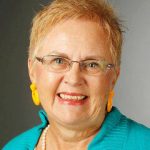|
Only have a minute? Listen instead
Getting your Trinity Audio player ready...
|

A recent article about how we are changing our view of the evolution of man through new and better information reminded me of my part in original research in man’s journey from primitive hominids to modern humans.
Several years ago, I took part in the Genographic Project sponsored by National Geographic. For a modest sum I was sent a kit to collect skin cells from the inside of my cheek. These cells allowed me to learn the path my ancestors took in their long journey from past to present. They also allowed the Genographic Project to add my DNA to its bank of information on the human species. I am now part of original research, and I know a little more about my story.
Of course, there are some things that are obvious to anyone even casually aware of modern anthropology. We know that all humans evolved in Africa starting 2.5 million years ago with Homo sapiens appearing some 200,000 years ago amid dramatic climatic changes. We know that humans traveled slowly but constantly out of Africa into Asia and Europe, developing differences in body type, coloring and health propensities as random genetic mutations favored certain individuals. An easy example of this is the long, thin, straight nose of northern Europeans. These noses help warm the cold northern air before it enters the trachea and lungs. Warmer air was less traumatic to tissues and more energy efficient, requiring less body heat in the core. This nose wasn’t ordered up by the people living in cold climates. Instead, as humans traveled from warm to cold climates, any individual who — purely by accident — was born with a slightly longer, narrower nose had a slight health advantage. In perilous times, that advantage would amount to a stronger, longer-lived person who had lots of children who all looked just like him or her.
So, we know that we all are “out of Africa.” Knowing that we all have the same beginning, the same long, arduous path seeking survival and advancement should prod us to find the similarities and not the differences between us. That big picture is what I was after. I didn’t expect any surprises, but I got some anyway.
After about 12 weeks of waiting, I was able to access the results of the test via the internet. I was taken, step by step, through my genetic history.
1. All women on earth today trace their heritage, passed from mother to daughter, to a single woman, a “mitochondrial” Eve from East Africa.
2. The ancestors in my N haplogroup date from about 70,000 years ago. These ancestors crossed the Sinai Peninsula and lived in Western Asia, probably sharing turf and DNA with Neanderthals.
3. About 65,000 years ago I joined a developing haplogroup R moving over the Caucasus Mountains into present day Russia and Europe.
4. About 47,000 years ago a woman in this group showed a new marker “U” and I found my way into the Baltic area and Scandinavia. (We are finally getting to familiar territory here).
5. About 30,000 years ago a U5 marker broke off from the main group and went to — wait for it — the two lands that claim my known relatives: Scandinavia and Great Britain. Here was the first surprise: The Sámi Reindeer herders (Laplanders to my mother) have a strong presence of this same marker. To my Norwegian grandmother these native people were “strange and wild,” not relatives. The second surprise is that my ancestors were in Europe long before the last glacial maximum and the Neolithic farmers who came with it.
I have a have a Sámi ancestry, which may show itself in my love of telling a good story. I have a Neolithic ancestry that is part Neanderthal. I share all this history with the humans on this planet. It is as John Donne said in his poem No Man is an Island: “… I am involved in mankind. And so send not to know for whom the bell tolls; it tolls for thee.”
While it is possible to hold legitimate rancor toward people who embody the worst in mankind, that is different than hating an entire class of people, separate from individual merit. If you do not love humanity, then you hate yourself. Try a little tenderness and keep the faith.
Louise Butler is a retired educator and published author who lives in Edinburg. She writes for our Board of Contributors.





